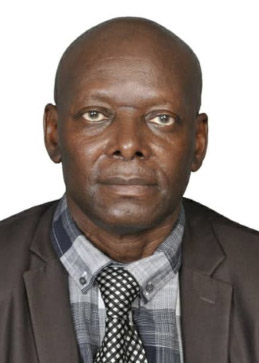U-233 processing restarts at Oak Ridge following upgrades
A fissile material handler uses a shielded glovebox to dissolve U-233 into a low-level form so that it can be mixed with grout for safe transportation and disposal. Photo: DOE
The processing and downblending of uranium-233 for disposal has resumed at Oak Ridge National Laboratory, following a pause in operations due to the COVID-19 pandemic, the Department of Energy announced on October 20. Removal and disposition of the U-233 is one of the DOE Office of Environmental Management’s highest priorities at the site, as stated in its strategic vision released earlier this year.
The project is removing a significant risk by eliminating the inventory of highly enriched fissile material stored in Building 3019, the world’s oldest operating nuclear facility, according to the DOE. Employees, known as fissile material handlers, use shielded gloveboxes to dissolve U-233 into a low-level form so that it can be mixed with grout for safe transportation and disposal. The material dates back decades and was originally pursued as a fuel for reactors; however, it did not prove to be a viable option.





 The Nuclear Regulatory Commission last week announced the publication of the 2020–2021 Information Digest, which describes the agency's mission, responsibilities, accomplishments, and activities and provides general information on nuclear-related topics. The digest is published annually and, beginning this year, will be available electronically only on the NRC’s website.
The Nuclear Regulatory Commission last week announced the publication of the 2020–2021 Information Digest, which describes the agency's mission, responsibilities, accomplishments, and activities and provides general information on nuclear-related topics. The digest is published annually and, beginning this year, will be available electronically only on the NRC’s website.

 Communities that host nuclear power plants face “swift and severe” economic and social impacts following a plant’s closure, according to a report by the Nuclear Decommissioning Collaborative that was released on October 12. The free, 61-page report,
Communities that host nuclear power plants face “swift and severe” economic and social impacts following a plant’s closure, according to a report by the Nuclear Decommissioning Collaborative that was released on October 12. The free, 61-page report,





 The future of nuclear energy is in cogeneration, according to a policy briefing released on October 7 by the United Kingdom’s Royal Society. (The equivalent of the United States’ National Academy of Sciences, the Royal Society, founded in 1660, is the oldest scientific institution in continuous existence.)
The future of nuclear energy is in cogeneration, according to a policy briefing released on October 7 by the United Kingdom’s Royal Society. (The equivalent of the United States’ National Academy of Sciences, the Royal Society, founded in 1660, is the oldest scientific institution in continuous existence.)